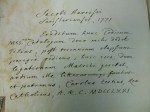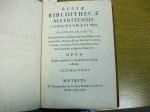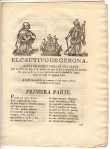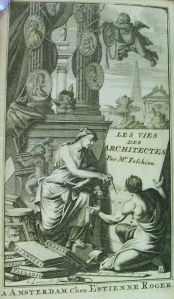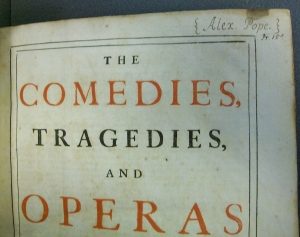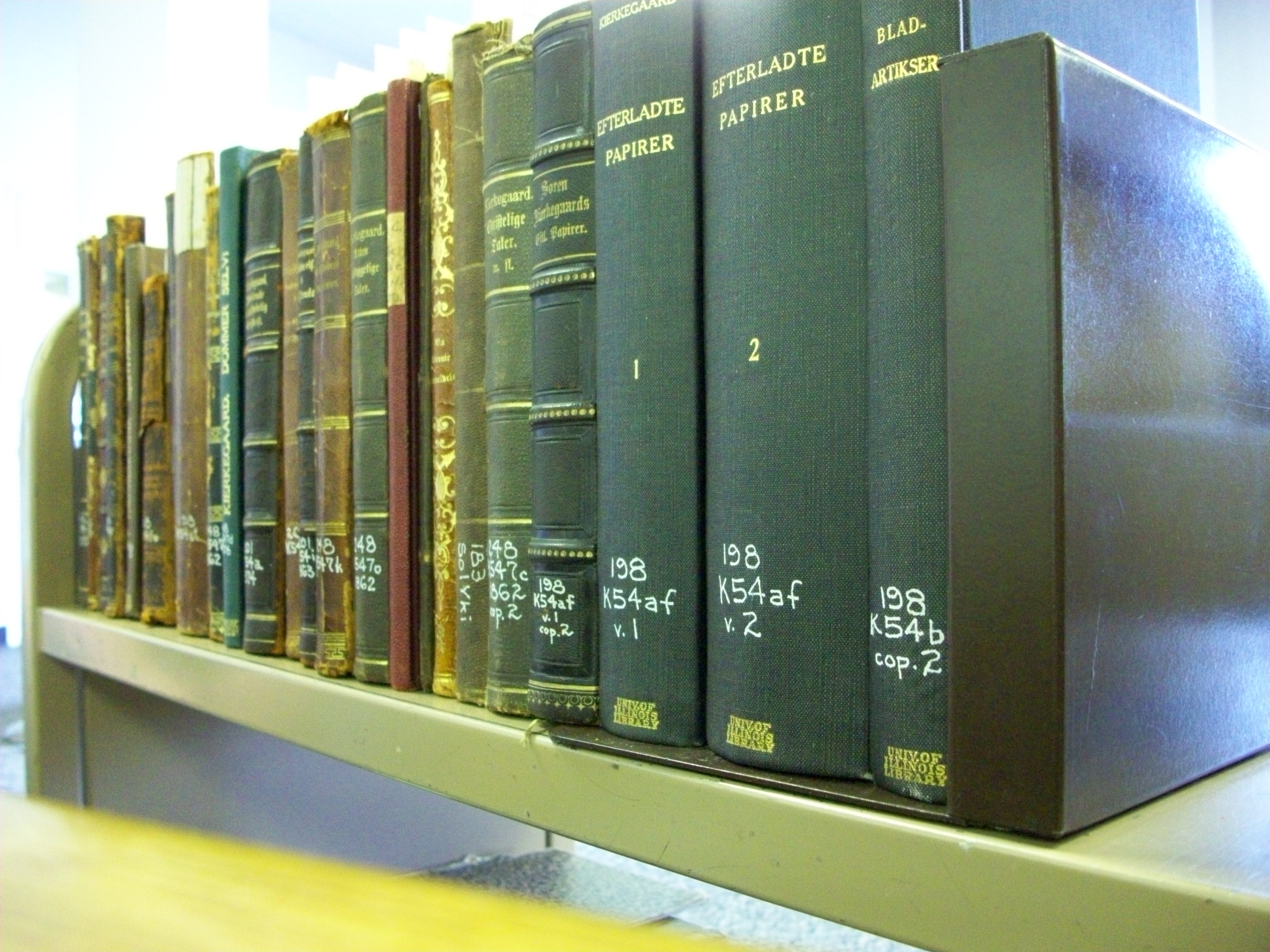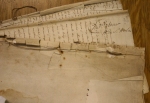Juan de Iriarte y Cisneros (1702-1771) was able to complete only one substantial volume of his bibliography of Greek manuscripts in the Spanish Royal Library in Madrid. When curator Bruce Swann decided to transfer the Classics Library’s copy of Regiae bibliothecae Matritensis codices Graeci mss. (Madrid, 1769) to the Rare Book & Manuscript Library, he noticed a Latin inscription on the fly-leaf (see image).
Translated, the inscription reads:
James Harris
Salisbury, 1771
My son gave this scholarly catalogue of manuscripts to me as a gift upon his return following an absence of three years abroad. Moreover, Charles III, the Catholic king, a noted promoter and patron of the arts and literature, gave it to him while he was employed at the embassy in Madrid in 1771.
James Harris (1709-1780) was an important English scholar and politician, the author of a number of works on grammar, music and criticism, copies of which may be found in the Rare Book & Manuscript Library. He was a great acquaintance of Georg Frideric Handel, many of whose operatic manuscripts he came to possess. In 1760 he was elected member of parliament for Christchurch, Hampshire, he later served as a commissioner of the Admiralty and of the Treasury, and from 1774 was the secretary of Queen Charlotte. His son, also named James Harris (1746-1820), rose because of his considerable diplomatic services to become, in 1800, the first Earl of Malmesbury. (Biographical details are from the Oxford Dictionary of National Biography.)
One of the younger Harris’s first postings was in Spain, where he was instrumental in averting a war over the Falkland Islands, and where he received this book as a gift from King Charles III. Young Harris recorded the following impressions of the Spanish monarch:
“He has a most clear head, comprehends with great alacrity, and answers with unparalleled accuracy. His heart, also, is excellent; the best of fathers and of masters, and although despotic, yet never a tyrant. … Such are his good qualities; his faults are, a false idea of the glory and power of his monarchy; a temper, when once irritated, irreconcileable; a bland submission to whatever happens, which, whether it is to himself or others, he calls the will of Providence; and such a determined attachment to his favourite amusement, the chace [i.e., hunting], as to make him slothful and negligent in his more important avocations” (Diaries and correspondence of James Harris, first Earl of Malmesbury. London, 1844, I, 50-51)
The younger Harris could be sure his father would be interested in this sumptuous catalog of Greek manuscripts. While in Spain, he also helped further his father’s researches in other ways:
“It having often been asserted, that an entire and complete copy of Livy was extant in the Escurial library, I requested my son in the year 1771, (he being at that timeminister plenipotentiary to the court of Madrid,) to inquire for me, what manuscripts of that author were there to be found” (The works of James Harris, Esq. London, 1841, p. 544).
Regiae bibliothecae Matritensis codices Graeci mss. (Q.A.481.75 M26r) may now be consulted in the Rare Book & Manuscript Library. AB

